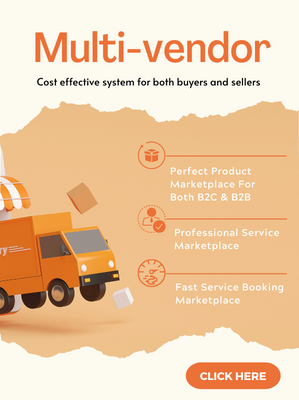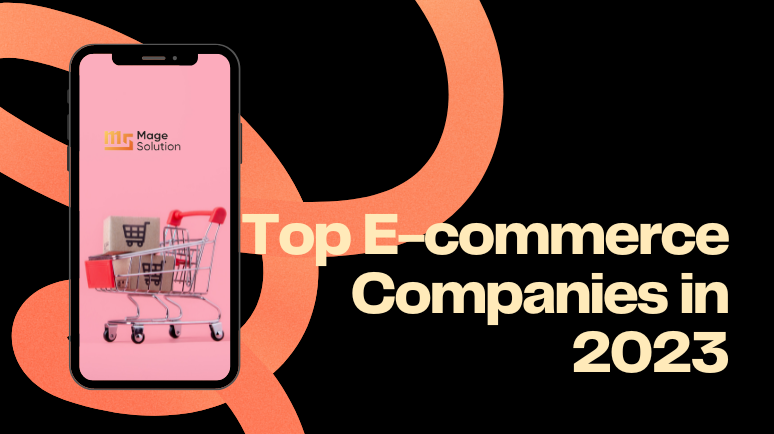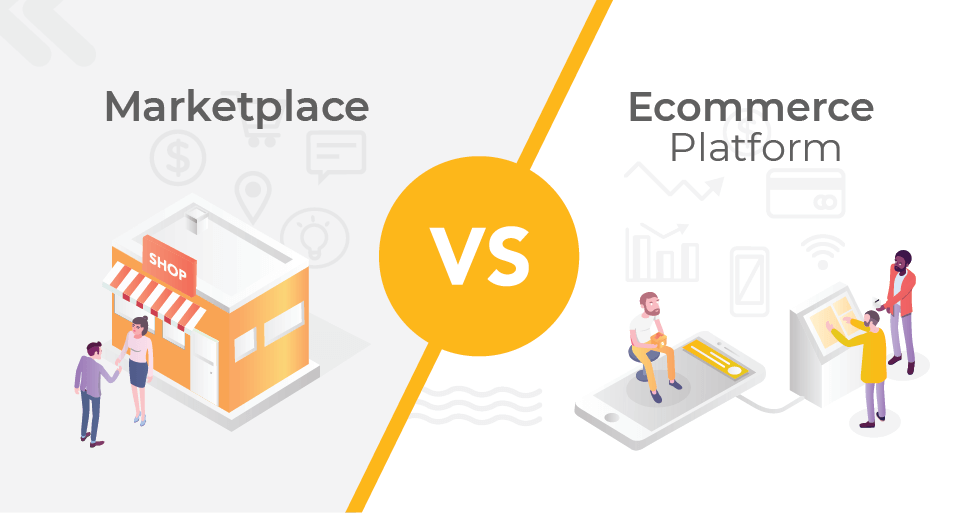Every online store wants to boost traffic and sales. It might be difficult to choose which marketing strategies to use even after you’ve put up a basic strategy. To assist you to apply each strategy, we’ve put up an overview of efficient eCommerce marketing strategies to build and implement a successful eCommerce marketing plan in 2022.
What is Ecommerce Marketing?

Any marketing effort you make to promote your online business and increase sales is known as eCommerce marketing. It applies to both acquiring new clients and convincing existing ones to make another purchase (customer retention).
Moreover, Ecommerce marketing includes the following:
- Makes your e-commerce website more attractive
- Brings your business in front of the target markets
- Enables anyone seeking products you sell to find your website with ease.
- Generates new buyers from website visitors
- Re-engages website customers to encourage them to make another purchase
- Makes post-purchase experiences better to boost client happiness and improve their loyalty
- Provides timely, appropriate offers and information to reactivate current clients to love shopping with you
You wouldn’t make any sales if eCommerce marketing wasn’t used. Launching your e-commerce website is insufficient since customers must first find you before making a purchase.
Types of Ecommerce Marketing

Almost all digital marketing channels as well as some offline, conventional ones are included in eCommerce marketing:
- Search engines
- Social media
- Email marketing
- SMS
- On-site
- Personal media, such as blogs
- Non-owned online publications and podcasts
- Print ads and TV commercials are examples of offline marketing.
Let’s explore the eCommerce marketing strategies that eCommerce marketers find to be most effective. You’ll receive a complete view of the many options to assist you in determining which best suits your business.
Ecommerce SEO
Your website will become more visible and accessible through search engine optimization (SEO) (Google, Bing, etc.). Adding keywords that potential clients might use to find products similar to yours is the main goal here. When the search engine realizes that you have what it is looking for, it ranks you high in the list of results.
The copy on your home page, FAQ page, and product page copy should all be optimized for e-commerce. Additionally, starting a blog will improve your SEO. There, you may respond to inquiries from potential customers like, “How to wash a denim shirt?”
>>> Read also:
Affordable SEO packages for small businesses: Why should you invest in SEO?
Local SEO: How to make use of local SEO for your eCommerce website?
Email marketing
An important strategy for promoting your e-commerce is email marketing. This approach is more affordable and dependable.
Simply selecting an email marketing solution is all that is required. After that, you may begin building your email list and launching email marketing campaigns. The key characteristics to consider are:
- Transactional emails: used for logins and password changes, monitoring updates, and order confirmations
- Automated emails: sent when a preset condition is satisfied or a client takes a specific action
- Segmented emails: Emails with relevant offers that are targeted to certain client segments based on their online behavior and past purchases
You may send a variety of emails to engage and convert your subscribers, including:
- Welcome email: Introduce your website and brand to your customers
- Drip nurture email: a series of messages that enlighten and educate subscribers about a product until they are prepared to make a purchase.
- Abandoned cart email: this works as a friendly reminder to the customer that they have added products to their shopping cart but have not yet made a purchase.
- Post-purchase email: Maintain your contact with the buyer to encourage more purchases.
- Upsells and cross-sells: Email offers with goods connected to previous purchases
- Win back email: Reactivating an inactive client who hasn’t purchased for a long time
- Loyalty reward email: Email to thank your loyal customers with an additional benefit, a higher-level discount, or a giveaway.
- VIP offer email: Provide unique offers to VIP clients for engaging them.
- Ecommerce newsletter: A frequent update on your business and products to stay top-of-mind.
Conversion rate optimization
Conversion rate optimization refers to the actions you do to convert website visitors. You’ve put a lot of effort and/or money into getting traffic. Therefore you expect sales to come from it.
You may employ a variety of strategies on your website to increase sales, including:
- Using push notifications
- Live chat
- Reviews from users and user-generated content (UGC)
- Tools for VR fitting and positioning, such as for clothing or furnishings
SMS marketing
SMS marketing is the method of using text messages for promotion. It works well for urgent warnings, updates, and time-limited offers.
For example, consider an automatic SMS that sends out a special offer on the morning of a customer’s birthday.
Just keep in mind that sending an SMS to a contact requires their permission. Additionally, this type of marketing is strictly regulated in several countries; thus, check before sending.
Organic social media marketing
This is your unpaid online presence on social platforms such as Facebook, Pinterest, Instagram, and TikTok,…
You may educate users about your products, offer business updates, and support causes that are consistent with your brand values when you campaign for e-commerce.
You may also set up social commerce, which includes selling directly on Facebook, Instagram, and Pinterest. It serves as an additional online sales channel for customers who don’t want to look around and purchase goods on your website.
Paid social media marketing
For eCommerce enterprises, organic social reach is often inadequate. Therefore, you have to pay to play.
Depending on the social media site, ad formats change. To determine which one is most effective for your e-commerce shop, test them out.
Then there is influencer marketing, which involves paying well-known users of social media to advertise your goods. They can assist you in reaching niche audiences. While some influencers have a set price, others are free. Not for the exposure, but for the sales that are generated via them. Try experimenting with several ones of the following sizes. The fact that the micro-influencers are more focused and more suited to your niche to convert more effectively.
Search advertising
You may purchase extra exposure on search engines in addition to social media. The most preferred choices are:
- Pay-per-click (PPC, Google AdWords) results are displayed at the top of the page for selected keywords, such as “recycled shoes.”
- With Google Shopping, a free service, you can list each product you sell along with pricing and images to reach out to more high-intent buyers.
Affiliate marketing
They accomplish this through blog articles where they discuss your goods or just list their top selections in a certain category. One of the recent trends in eCommerce is influencers publishing directly on social media in place of affiliate marketing. However, affiliate marketing is still a robust industry for Amazon retailers.
Partnerships
To expand your reach to their audience as well, you might develop cooperation with other businesses. For lifestyle eCommerce firms with similar target markets, it works well as a marketing approach.
PR and brand awareness
Although PR may seem outdated in e-commerce marketing, it is not. You’ll gain from being highlighted in both offline and online media sources, especially at launch.
A founder interview, a mention in a listicle (X gift ideas for Y), or having your headliner appear in a picture shoot are all examples of how to do this.
Ecommerce content marketing
Another marketing strategy that might help e-commerce firms, in the long run, is content. It comes in a variety of formats:
- Blog posts
- Video
- User-generated content, including advice and assistance with images, videos, forum posts, and testimonials
The purpose of content marketing is to inform, entertain, assist customers in making decisions, and answer inquiries.
You have the chance to share your knowledge and values, clear any possible concerns, and convince new or existing customers that you are a reputable company.
The best eCommerce marketing strategies

Utilize customized URLs
This is one of the simplest eCommerce marketing strategies you can use to monitor the products your clients are browsing. It assists online merchants in monitoring client behaviour and analyzing it to boost sales and enhance the shopping experience.
You should hire IT specialists that are proficient in using customized URLs. Because they may help you discover more about your target market and persuade them to purchase the products they want. Google recommends that a website’s URL structure be as easy and simple to remember as possible. This is because people utilize search engines more often than any other method.
Additionally, remember to include your goal keywords in customized URLs. Because this can aid search engines like Google and Bing in giving you a higher ranking in relevant searches. According to Google’s announcement on customized URLs, users will have an easier time finding what they’re looking for and will have a better search experience if your URL is more specialized.
Enhance Search Engine Optimization (SEO)
To come up with new ideas on which product categories would be best for their business, many eCommerce marketers do keyword research. Through ad platforms like Adwords, they do it depending on changes in search traffic, hot topics, and cost-per-click rates. According to Moz, 57% of all organic traffic worldwide is presently made up of SEO traffic.
To increase your sales, you can improve your SEO techniques by these tips below:
- Create unique content: To rank effectively in search engines, most online stores rely on content from other websites. Therefore, you should consider writing your blog articles or product descriptions now. Search engine crawlers will soon recognize your website in case you do this, and these entries will result in an increase in organic traffic.
- Create backlinks: Leverage the influence of other people’s audiences by requesting that they share the URL of your website with their followers on social media platforms or blogs. Your company is promoted through various forum conversations by adding a link to your website in the signature section.
- Optimize your photographs: When uploading product images, utilize your target keywords in the file names and descriptions. Additionally, search engines can immediately retrieve pertinent data about specific products from them.
Increase site speed for better conversions
47% of online buyers will leave a website if it takes longer than three seconds to load, according to research on eCommerce development. Therefore, it is also one of the eCommerce marketing strategies in 2022 you should consider.
People like websites that load quickly. Because they don’t want to waste their valuable time waiting for slow-loading websites to load, they want to get what they’re searching for with just a few clicks.
As a result, if after thorough testing your eCommerce business website still takes too long to load, you should think about hiring experienced eCommerce developers who can speed up your website appropriately. After all, spending money to speed up your website is better than losing potential clients because of slow-loading pages.
Identify what drives your clients.
The following advice will assist you in developing an engaging customer person:
- You can use online survey tools such as SurveyMonkey or Typeform to create free polls with a variety of questions relevant to your business or industry. More importantly. a questionnaire shouldn’t be too lengthy. Because participants can be bored. In that situation, you should examine your data and determine whether any questions are unnecessary.
- Use Google Analytics to find out where most of your traffic is coming from. You may also check how many purchases were made on your website each month, which product categories are the most popular, etc. You may learn more about the habits of your website users and learn what they love most by looking at these data.
- Studying other eCommerce sites that are already competitive in search engine rankings is another helpful tactic. What lessons can you draw from them? Pay attention to the unusual characteristics that set them apart from the opposition.
- You may also research relevant online forums for your sector and look at some of their most well-liked discussions or postings.
Mobile-friendly
Mobile devices account for almost half of all online sales (smartphones and tablets). Mobile users are three times more likely to make a purchase after clicking on a search result from their phone, according to Search Engine Land. Therefore, it leads to greater conversion rates of mobile devices with 78% of all searches browsing stores instead of only 61% for desktop and 64% for mobile.
Moreover, buyers want to make purchases from other eCommerce websites with suitable product categories created specifically for small screens. Thus if you want to beat out the competition, your eCommerce store needs to appear fantastic across a variety of mobile devices kinds. Additionally, you should choose expert eCommerce software that is fully suited for mobile devices to build your website. For all reasons mentioned above, this is definitely one of eCommerce marketing strategies in 2022 you should not miss.
Make rich snippets available to customers to help them find your products
When visiting an eCommerce website, online customers scan the whole page with their eyes in search of the item they want to purchase. However, if people have to scroll through several search results pages to discover a certain item, most of them won’t bother.
Rich snippets, which are basic tags utilized by Google and other search engines and third-party services, come into play in this situation. Without setting up a distinct website for each product, it seeks to increase the visibility of web content.
It enables your clients to learn about new products immediately. Search engines employ rich snippets, which are unique elements, to improve the presentation of search results. It provides you with a huge chance today to boost the SEO of your website and increase traffic from mobile devices.
Pay for promotion to get quick results
Numerous e-commerce websites neglect to advertise and just rely on organic visitors. This is a grievous mistake since you may boost your online sales with paid advertising strategies even if you aren’t showing up highly in Google’s search results. By talking directly to potential buyers rather than letting them find your items through other SERP features, paid marketing aids in building brand recognition.
Use AdWords Express to build the most effective advertising possible. With this excellent service, you can choose the price and general region where you want your adverts to appear.
In addition, Google Shopping is another tool you should use. With this pay-per-click (PPC) option, you can buy more exposure for your products by having them appear at the top of search results.
Email marketing
A successful, trustworthy, and efficient approach to building brand awareness and advertising your items to prospective buyers is through email marketing.
However, you don’t want to spam subscribers with emails they don’t want to receive because doing so would be a waste of time and money. As a result, you should only ever send emails based on predetermined criteria.
For instance, if someone subscribed to one of your marketing campaigns using their email address, they could later want to get more of the same or consistent information. Because of this, it’s crucial to customize your email marketing plan to the target demographic.
Use social media to boost sales
Another great and suitable approach to engage with clients is through social media, especially when advertising your eCommerce business. Try posting about your specific products on Facebook, Twitter, and Instagram, and invite people to subscribe through email to stay up to date with everything that’s happening.
You won’t need to rely on paid advertising strategies like AdWords or PLA ads if you promote your eCommerce store on social media. Additionally, by doing this, you’ll be able to connect with more potential clients, which will eventually result in higher revenues and conversion rates.
Conclusion
By properly implementing these strategies, you’ll be able to connect with more people who are interested in making a purchase from your website. As a result, your conversion rates will rocket over time, increasing both conversions and revenue. Hopefully, this post has given you some insight into eCommerce marketing strategies to successfully promote your online store. More importantly, if you still consider how to promote your business, you can hire eCommerce developers to help you handle all your concerns. So visit an eCommerce development company like Magesolution. We have qualified experts who can develop a unique eCommerce website to make your business stand out from the rest. CONTACT US to do it right now,



